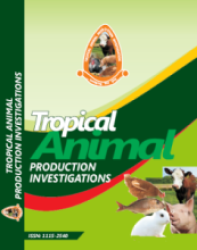Nutritional Value of Palm Kernel Cake and Meal for Livestock and Fish Feeding: A Review
Keywords:
Palm kernel by-products, Nutritional value, Anti-nutrients, Livestock, FishAbstract
The use of palm kernel cake (PKC) and meal, which are by-products of oil palm processing for livestock feeding has been reported in the literature. The production of these palm kernel by-products in the last decade has been on the increase with Nigeria and Malaysia as leading producers. The cake is reported to have a protein of between 14 and 21%; crude fibre, 21-23% and gross energy of about 20.9MJ/kg. Its high amounts of non-starch polysaccharides (NSPs) mainly in the form of mannan and galactomannan confers on it a low digestibility in poultry. It is also limiting in lysine and the sulphur-amino acids. Due to its high mannan content, feeding PKC to poultry and fish at levels more than 12% in the diet necessitates its supplementation with mannanase and other polysaacharidases such as cellulases and xylanases. Ruminants however, are able to tolerate higher levels of up to 30%. Levels of inclusion of PKC higher than 50% in the diets of sheep and cattle without zinc supplementation can result in copper toxicity and in some cases death of the animal. PKC when supplemented with enzymes or when fermented with fungi such as Aspergillus niger, Trichoderma viride and Trichoderma reesei becomes a useful energy and protein feed for poultry with performance values comparable to those of most conventional plant protein ingredients.

